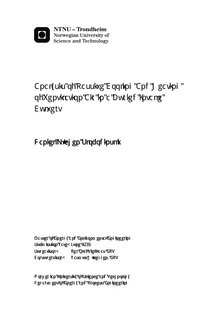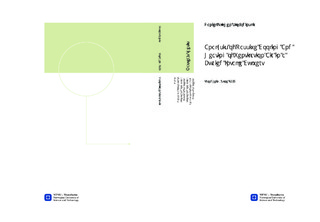| dc.contributor.advisor | Tjelflaat, Per Olaf | nb_NO |
| dc.contributor.advisor | Høseggen, Rasmus | nb_NO |
| dc.contributor.author | Slobodinski, Daniel Løchen | nb_NO |
| dc.date.accessioned | 2014-12-19T13:54:25Z | |
| dc.date.available | 2014-12-19T13:54:25Z | |
| dc.date.created | 2013-09-25 | nb_NO |
| dc.date.issued | 2013 | nb_NO |
| dc.identifier | 651449 | nb_NO |
| dc.identifier | ntnudaim:10202 | nb_NO |
| dc.identifier.uri | http://hdl.handle.net/11250/257620 | |
| dc.description.abstract | Passive ventilation is becoming increasingly important due to more focus on limiting electricity for ventilation purposes. Underground culverts may be utilized to achieve preheating or precooling of the intake air. Therefore it represents a possible measure to reduce the electricity usage used for heating and cooling. In order to assess the possible heating and cooling performance of a culvert situated at Grong primary school, the impact of rotational versus uniform inflow on the convective heat transfer has been examined in a CFD model. The results from this model have been compared to measurements performed at Grong and other similar experiments. Based on this, a heat performance model was created in ESP-r incorporating a heat convection model and one-dimensional heat conduction model together with local weather data from Grong.The model showed that the culvert might be used for heating during fall and winter when the ambient temperature is low compared to the ground temperature. For the spring, the culvert provides undesirable cooling. During the summer when the ambient temperature is high enough, the culvert can provide cooling in the hottest days. | nb_NO |
| dc.language | eng | nb_NO |
| dc.publisher | Institutt for energi- og prosessteknikk | nb_NO |
| dc.title | Analysis of Passive Cooling And Heating of Ventilation Air in a Buried Intake Culvert | nb_NO |
| dc.type | Master thesis | nb_NO |
| dc.source.pagenumber | 138 | nb_NO |
| dc.contributor.department | Norges teknisk-naturvitenskapelige universitet, Fakultet for informasjonsteknologi, matematikk og elektroteknikk, Institutt for elkraftteknikk | nb_NO |

